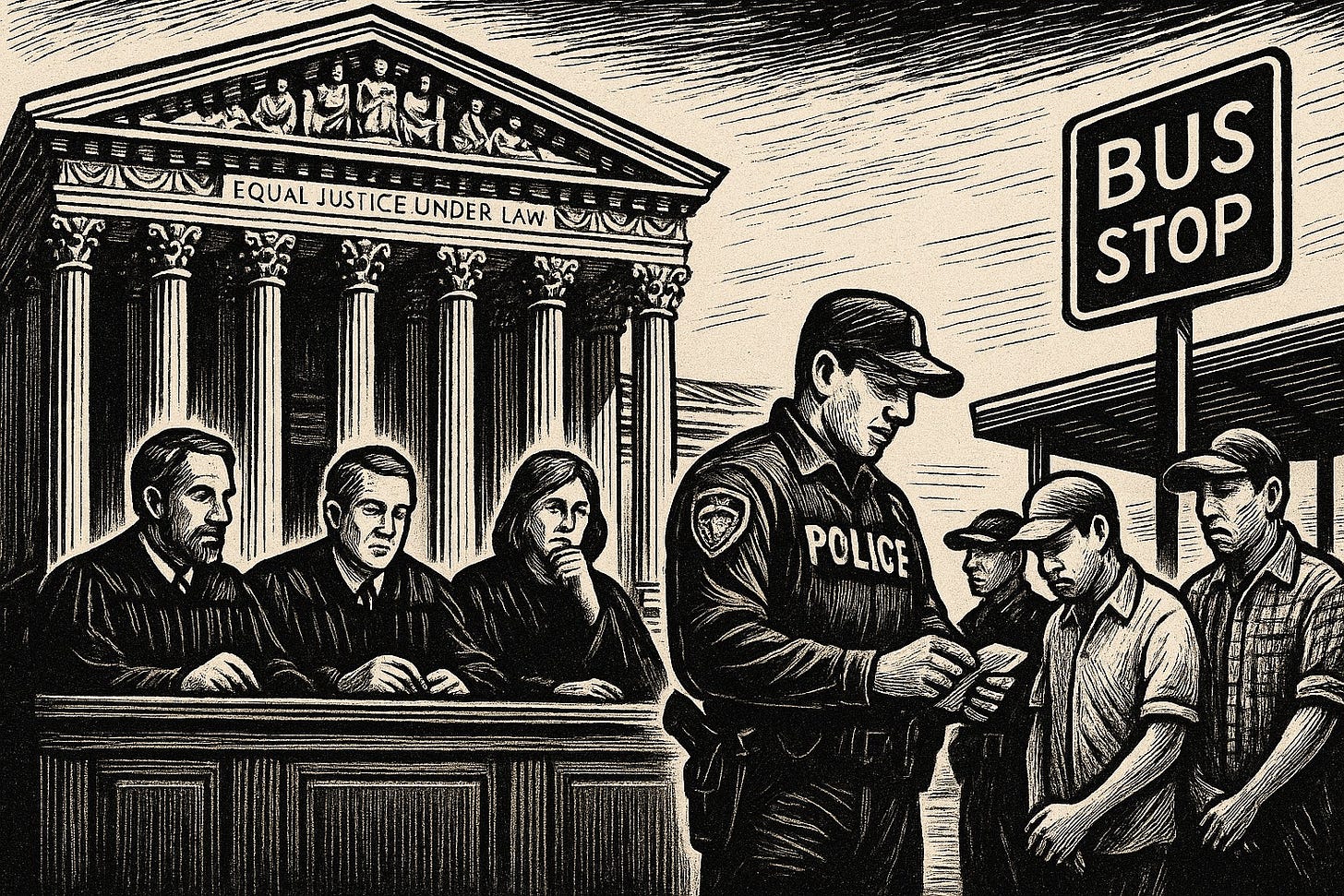Court grants government request to continue stops based on “reasonable suspicion” while appeal moves forward
In June, armed and masked agents in Los Angeles swept through car washes, bus stops, and tow yards. They seized men waiting for day jobs, tamale vendors, even U.S. citizens working on their cars. A federal judge said the Constitution demanded more, and on July 11, barred officers from relying solely on four factors: looks, language, location, and labor .
But on September 8, the Supreme Court stepped in. At the government’s request, it stayed that order. Justice Brett Kavanaugh explained: federal law permits brief stops when officers have “reasonable suspicion, based on specific articulable facts.” He cited statistics—15 million people unlawfully in the U.S., about 2 million in Los Angeles, or ten percent of the region’s population . Those numbers, he said, justify stops in places where undocumented workers often gather.
Justice Sonia Sotomayor told another story. She described raids where rifles were drawn and citizens pushed against fences despite producing identification. She warned that the four factors sweep in millions of lawful residents and fail the Constitution’s demand for particular suspicion .
For decades, enforcement has swung like a pendulum. Leniency sets expectations: immigrants work, families settle, employers hire. Then comes a crackdown. The rules shift overnight. Citizens who once moved freely suddenly carry passports to prove they belong. Officers, after years of restraint, are told to act aggressively. That inconsistency breeds confusion and overreach. Laws work best when applied steadily. Clear expectations create order. Shifting standards create fear.
The contempt question sharpened the conflict. The district court threatened sanctions for unlawful stops. Kavanaugh warned such after-the-fact judgments would chill lawful enforcement. Sotomayor pointed to officials vowing to “go harder” despite the court’s order . Two views: one of officers paralyzed, another of officers emboldened.
The broader lesson? Justice depends not on sudden swings but on steady rules. When the law is firm, it is respected. When it lurches, it is resisted. Consistency—neutral, even-handed, predictable—is the glue that binds enforcement to legitimacy.
On September 24, a federal judge in Los Angeles will hear arguments on a preliminary injunction and class certification. The Ninth Circuit will continue its review. And the Supreme Court may ultimately decide, once and for all, where suspicion ends, and protection begins.


